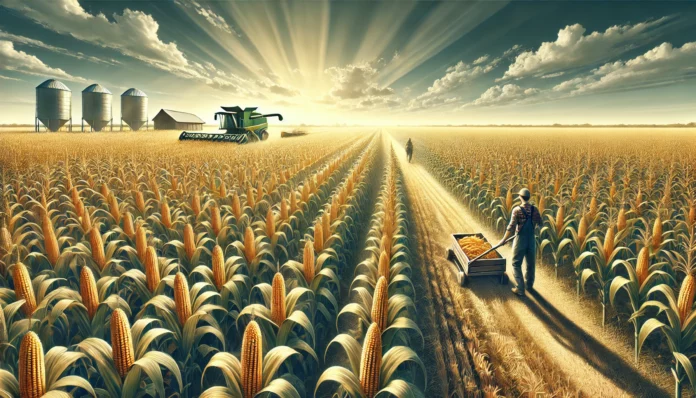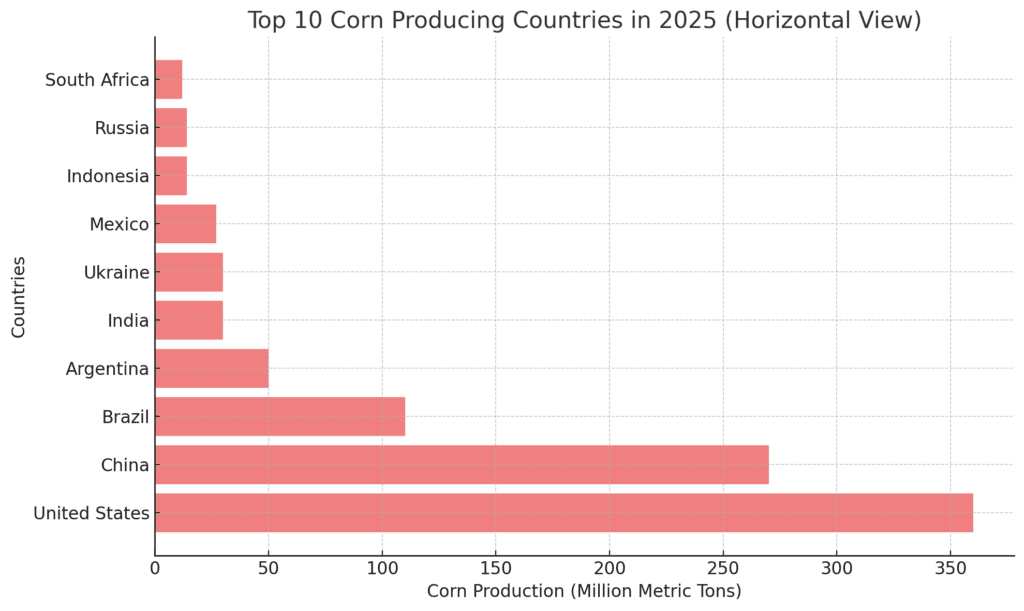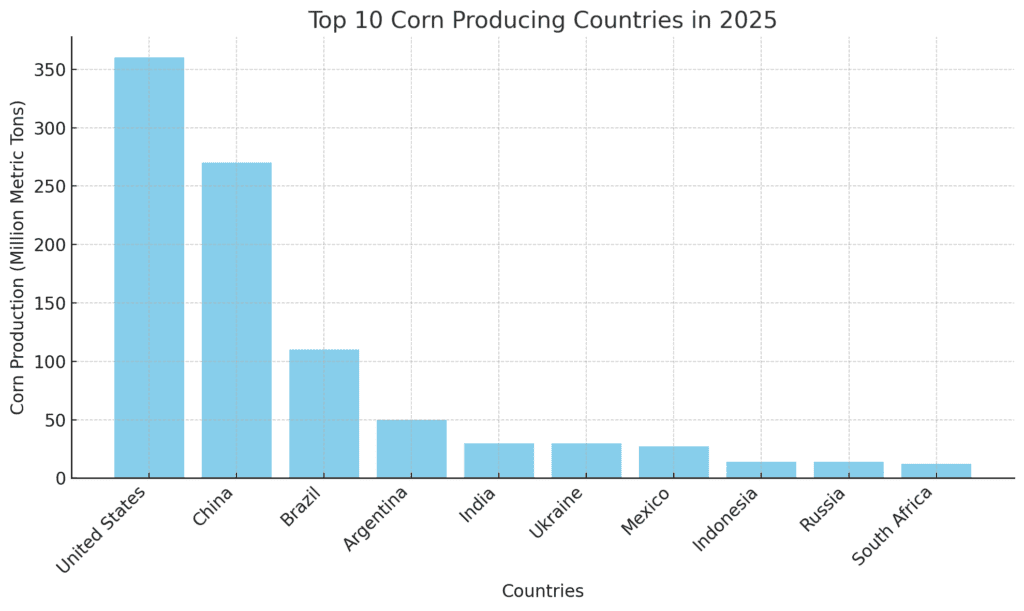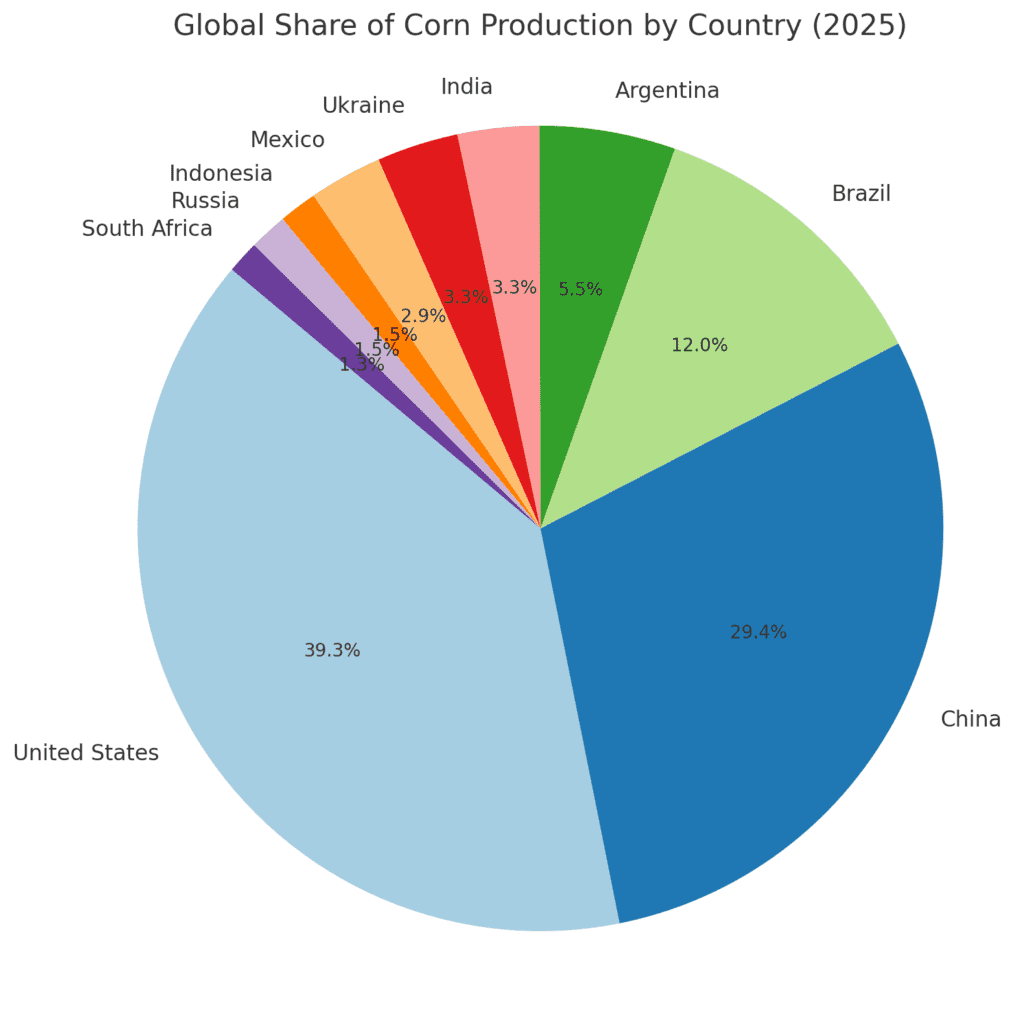
Introduction
Corn, or maize, is one of the most important staple crops in the world, serving as a vital source of food, livestock feed, and industrial products. The demand for corn continues to rise, driven by its wide applications and crucial role in global agriculture. In 2025, certain countries lead the world in corn production, setting the stage for both agricultural innovation and economic growth. Here’s a look at the top 10 largest corn-producing nations globally.

1. United States
The United States remains the world’s largest producer of corn, contributing a significant portion of global supply. In 2025, it’s projected that the U.S. will produce over 360 million metric tons of corn, accounting for approximately 30% of global production. The majority of U.S. corn production occurs in the Midwest, particularly in Iowa, Nebraska, and Illinois. Corn is a crucial crop for the U.S. economy, with major applications in livestock feed, biofuels, and food products.
Key Facts:
- Estimated Production: 360 million metric tons
- Leading Production States: Iowa, Illinois, Nebraska
2. China
China ranks as the second-largest corn producer in the world, contributing to nearly 20% of global corn production. Despite its dominance in rice production, China relies heavily on corn for animal feed, industrial uses, and food consumption. The country has faced fluctuating corn production due to environmental factors and policy changes, but it remains a major player in the global corn market.
Key Facts:
- Estimated Production: 270 million metric tons
- Leading Production Areas: Heilongjiang, Jilin, Inner Mongolia
3. Brazil
Brazil’s corn production has surged in recent years, positioning it as the third-largest producer globally. With favorable weather conditions and advanced agricultural technology, Brazil’s production has been steadily increasing. Corn plays a vital role in Brazil’s agricultural exports, particularly to China, and is used extensively in biofuels and animal feed.
Key Facts:
- Estimated Production: 110 million metric tons
- Key Export Destinations: China, Europe
4. Argentina
Argentina is another significant producer of corn, with large-scale production benefiting from vast agricultural land. In 2025, the country is expected to produce around 50 million metric tons of corn, making it the fourth-largest producer globally. Corn is vital to Argentina’s economy, where it is grown for both domestic consumption and export.
Key Facts:
- Estimated Production: 50 million metric tons
- Key Production Areas: Buenos Aires, Córdoba, Santa Fe
5. India
India ranks fifth in corn production globally. Although the country’s primary agricultural focus is rice and wheat, corn has emerged as an essential crop for both domestic consumption and export. In 2025, India is projected to produce around 30 million metric tons of corn. The country’s diverse agricultural regions contribute to its corn production, with significant output from Uttar Pradesh and Bihar.
Key Facts:
- Estimated Production: 30 million metric tons
- Leading Production States: Uttar Pradesh, Bihar
6. Ukraine
Ukraine’s position as the sixth-largest corn producer stems from its rich soil and favorable climate conditions. Corn production in Ukraine has expanded significantly over the past few years, particularly as the country looks to increase its agricultural exports. In 2025, Ukraine is projected to produce approximately 30 million metric tons of corn.
Key Facts:
- Estimated Production: 30 million metric tons
- Major Export Markets: European Union, China, Turkey
7. Mexico
Mexico, a major corn-consuming country, ranks seventh in global production. Corn is not only a staple food in Mexico, but it also holds cultural significance. In 2025, Mexico is estimated to produce around 27 million metric tons of corn, much of which is used for domestic consumption and tortilla production.
Key Facts:
- Estimated Production: 27 million metric tons
- Leading Production States: Sinaloa, Jalisco, Chiapas
8. Indonesia
Indonesia’s corn production is significant for the Southeast Asian region. Corn plays an important role in Indonesia’s agricultural sector, both for food consumption and as feed for the country’s growing livestock industry. With steady growth in production, Indonesia is projected to produce 14 million metric tons of corn in 2025.
Key Facts:
- Estimated Production: 14 million metric tons
- Key Production Areas: East Java, Central Java
9. Russia
Russia has steadily increased its corn production in recent years, moving into the top 10 producers. The country’s favorable climate in the southern regions contributes to its corn yield, with a projected production of 14 million metric tons in 2025. Corn is primarily used for animal feed and biofuel production in Russia.
Key Facts:
- Estimated Production: 14 million metric tons
- Leading Production Regions: Krasnodar, Rostov
10. South Africa
South Africa is the largest corn producer in Africa, ranking tenth in global production. The country produces corn for both domestic consumption and export, with a projected output of 12 million metric tons in 2025. Corn is vital for food security in Southern Africa, and South Africa serves as a key exporter to other African nations.
Key Facts:
- Estimated Production: 12 million metric tons
- Key Production Areas: Free State, Mpumalanga, North West

Conclusion
The global landscape of corn production continues to evolve, with nations like the United States, China, and Brazil leading the charge. As these countries adapt to changing climates and technological advancements, corn remains an essential crop for both food security and economic growth. Understanding the top producers provides insight into global agricultural trends and the supply chain that drives this vital industry.




